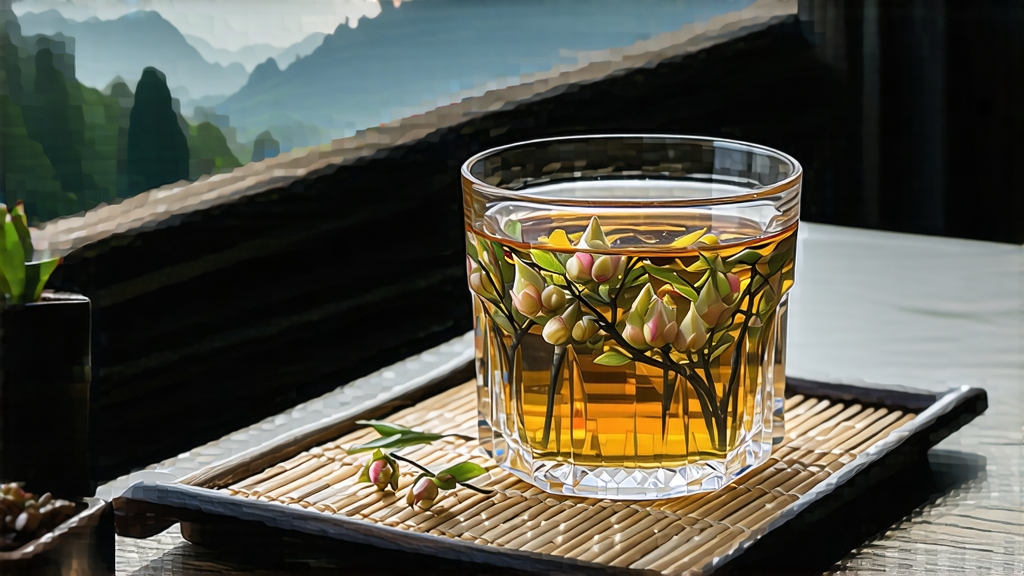
Bai Hao Yin Zhen—“Silver Needle” in English—has long been the quiet luminary of China’s white-tea sky. To the uninitiated it may look like a small pile of shaved moonlight, yet each slim bud carries the compressed chronicle of Fujian’s coastal clouds, sea breezes, and five centuries of tea-makers who learned to leave well enough alone. This essay invites the international reader to step past the exotic name and into the living story: where the tea came from, how it is coaxed from bush to cup without a single twist of rolling, why it tastes like pear and mountain air, and how to brew it so its whisper is heard at full volume.
-
Historical Prelude: From Imperial Tribute to Global Muse
The first verifiable record of “white tea” appears in the Song Dynasty treatise Da Guan Cha Lun (1107), yet the tribute cakes then produced were steamed and pounded, closer to green pu-erh than to today’s loose buds. The modern form of Silver Needle emerges during the late Ming, when the imperial court abandoned compressed tea and Fujian tea farmers responded by perfecting sun-drying. Fuding and Zhenghe counties, blessed by a subtropical maritime climate and acidic lateritic soil, became the twin cradles. By the Qing, Silver Needle was already bartered along the Tea Road to Mongolia and Siberia, prized for its light caffeine and reputed cooling properties. In 1891 the first chest reached London via Hong Kong, where it was auctioned as “White China Tea, Pekoe Hao Ya,” fetching twice the price of Keemun. Today it is the benchmark against which all white teas are measured, yet still produced in tiny lots—fewer than five thousand kilograms a year of authentic Fuding Silver Needle enter the global market. -
Botanical Identity: The Da Bai Hao Cultivar
Authentic Bai Hao Yin Zhen is plucked only from the Da Bai Hao (“Big White Hair”) cultivar, a naturally mutated large-leaf bush selected during the 1850s in Fuding. Its spring buds reach 2.5–3 cm, sheathed in a down so dense it refracts light, creating the characteristic silver shimmer. The bush is allowed to grow waist-high, pruned flat like a table to encourage horizontal shoots that are easier to pick. Because the cultivar’s polyphenol oxidase activity is unusually low, oxidation proceeds in slow motion, giving the tea-maker a wider margin of error and the drinker a softer cup. -
Micro-Terroir: Why Fuding Tastes of Sea Mist
Fuding lies on the northeastern horn of Fujian, where the Daiyun mountain range traps moist air from the East China Sea. March mornings alternate between fog (95 % humidity) and sudden bursts of sunshine, a natural on-off switch that drives moisture in and out of the picked buds. The soil is a coarse laterite rich in kaolin and iron; roots must struggle, concentrating amino acids. Together these factors create the tea’s signature “marine umami,” a faint suggestion of oyster shell that lingers behind the sweeter notes. -
Craft: The Art of Doing Almost Nothing
Silver Needle is made in four silent steps—pick, wither, dry, sort—yet each is timed to the hour.
a. Picking: Only the unopened bud is taken, ideally before the Qingming festival when the spring flush is still translucent. Experienced pluckers use a diagonal snap that leaves the tiny fish-leaf behind; any residual leaf will add grassy bitterness.
b. Withering: The buds are laid 2 cm thick on bamboo trays stacked like sliding drawers in a sun-lit corridor. For the first six hours they bask in gentle March sun (26 °C), then are moved indoors where temperature drops to 18 °C and humidity hovers at 70 %. Here they rest for 24–36 hours, losing 80 % of their moisture while enzymes nibble at catechins, converting them into delicate floral lactones. No machine is used; the tea-master judges readiness by the bend of a bud—it should arc without snapping, and the down should smell like ripe melon.
c. Drying: Traditionally the withered buds were given a final 20-minute bake over charcoal